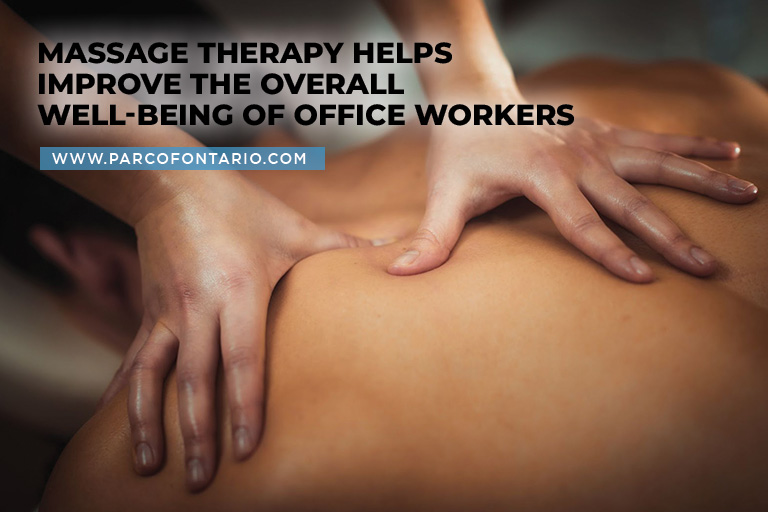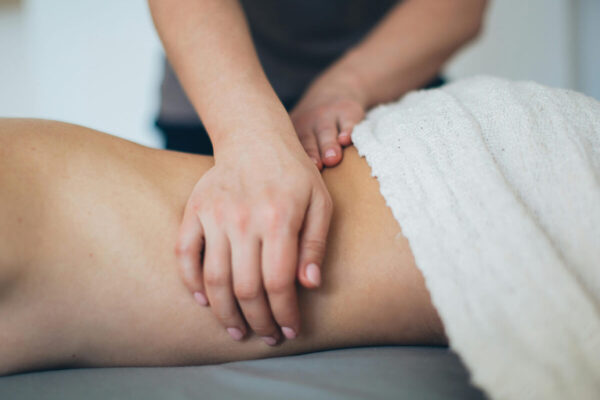The Physical Impact of Desk Jobs and the Beneficial Role of Massage Therapy
In today’s modern workforce, the prevalence of desk jobs has become increasingly common. Many individuals spend most of their workday seated at a desk, staring at computer screens, and engaging in repetitive tasks. While desk jobs offer stability and opportunity, they also present significant challenges to one’s physical and mental well-being.
This article delves into the physical ramifications of desk jobs and explores how massage therapy serves as a valuable tool in alleviating the strain associated with sedentary work environments.
Understanding the Risks of Desk Jobs
Desk job workers often experience a myriad of physical ailments attributed to their sedentary work habits. Among the most prevalent issues are lower back pain, tight shoulders, and strained neck muscles. These discomforts can impair mobility, hinder concentration, and diminish job satisfaction.
Moreover, individuals who neglect to address these ailments may face long-term consequences that impact their ability to perform daily activities both at work and in their personal lives.
Sedentary Lifestyle Consequences
Sitting for prolonged periods brings about a range of office job health risks and challenges that impact individuals daily.
Prolonged sitting can lead to stiffness and tightness in muscles, particularly in the back, hips, and shoulders.
Sitting for hours on end can contribute to poor posture, leading to discomfort and increasing the risk of long-term spinal issues.
The repetitive nature of desk work can cause certain muscle groups to become overused while others weaken, resulting in imbalances that affect movement and stability.
-
Reduced Blood Circulation
Sitting for extended periods can impede blood flow, leading to decreased oxygen delivery to tissues and organs, and potentially contributing to cardiovascular issues.
One of the most common complaints among desk workers is back pain, which results from prolonged sitting, poor posture, and inadequate support from office furniture.
Constantly craning the neck to view computer screens can lead to stiffness and discomfort in the neck and upper back.
Repetitive motions, such as typing and mouse usage, can contribute to the development of carpal tunnel syndrome, a painful condition affecting the hands and wrists.
Effects on Physical and Mental Well-being
Desk job health effects extend far beyond physical discomfort; they deeply affect both our bodies and minds.
-
Increased Risk of Obesity
Sedentary behaviour is linked to weight gain and obesity, as physical activity levels decrease.
Prolonged sitting contributes to poor circulation and higher risks of heart disease and stroke.
Desk jobs can exacerbate mental health issues like anxiety and depression due to decreased physical activity and increased stress levels.
Sedentary behaviour often leads to feelings of fatigue and headaches, impacting overall productivity and well-being.
Long periods of sitting can result in decreased energy levels and reduced cognitive function, hindering productivity in the workplace.
Exploring the Benefits of Massage Therapy

Massage therapy serves as a holistic approach to addressing the physical and psychological challenges associated with desk jobs. Its profound effects extend beyond mere relaxation, offering a holistic approach to addressing both the physical and mental challenges faced by desk job workers.
Massage therapy targets areas of tension and stiffness, promoting relaxation and restoring flexibility in muscles.
It provides effective relief from chronic conditions such as back pain, neck stiffness, and carpal tunnel syndrome, enhancing overall comfort and mobility.
Through soothing touch and gentle manipulation, massage therapy induces a state of relaxation, alleviating stress and promoting mental well-being.
Massage techniques stimulate blood flow, facilitating the delivery of oxygen and nutrients to tissues while aiding in the removal of toxins and metabolic waste.
Regular massage sessions help correct postural imbalances and alleviate strain on muscles, promoting optimal alignment and reducing the risk of musculoskeletal issues.
Studies suggest that massage therapy can bolster the immune system by enhancing lymphatic circulation and reducing inflammation throughout the body.
By reducing stress and promoting relaxation, massage therapy fosters mental clarity and concentration, enhancing cognitive function and productivity.
Muscle Tension Relief Techniques

Muscle tension is a common affliction for individuals navigating the demands of desk jobs and sedentary lifestyles. The cumulative effects of prolonged sitting and repetitive movements often manifest as tightness and discomfort, impairing both physical comfort and mental well-being.
Here are some effective techniques for relieving muscle tension and restoring mobility, empowering individuals to reclaim vitality and resilience in their daily lives.
This technique applies firm pressure to deeper muscle and connective tissue layers, focusing on chronic tension areas to induce relaxation.
By identifying and addressing specific points of muscular tension, trigger point therapy aims to release knots and alleviate pain, restoring optimal muscle function.
Myofascial release techniques focus on releasing tension in the fascia, the connective tissue that surrounds muscles and organs, promoting flexibility and reducing stiffness.
-
Stretching and Range of Motion Exercises
Incorporating stretching and range of motion exercises into your daily routine helps prevent muscle tightness and improves overall flexibility, reducing the risk of injury and discomfort.
Applying heat to tense muscles helps increase blood flow and relax tightness, providing temporary relief from discomfort and promoting relaxation.
Proper hydration and nutrition play a crucial role in muscle health and recovery. Staying hydrated and consuming a balanced diet rich in nutrients supports muscle function and reduces the risk of tension and stiffness.
By incorporating these techniques into your self-care routine, you can effectively manage muscle tension and promote overall well-being, allowing you to thrive in the dynamic landscape of modern living.
Techniques for Alleviating Desk Job Strain
In addition to seeking professional massage therapy, desk job workers can incorporate various self-care practices and stress reduction techniques into their daily routines to alleviate strain and promote overall well-being.
-
Posture Improvement Exercises
Engage in simple exercises and stretches to counteract the effects of prolonged sitting and improve posture.
-
Ergonomic Workstation Setup
Invest in ergonomic furniture and accessories to create a more comfortable and supportive work environment.
Take short breaks throughout the day to stretch, walk, or engage in light physical activity to combat the negative effects of sedentary behaviour.
Integrating Wellness Practices into the Work Environment
Employers play a pivotal role in fostering a culture of wellness within the workplace. By prioritizing employee health and implementing supportive policies and initiatives, organizations can enhance productivity, reduce absenteeism, and foster a positive work environment.
Ergonomic assessments to ensure that employees’ workstations are properly configured to promote comfort and reduce the risk of injury.
Wellness programs include opportunities for physical activity, stress management workshops, and access to complementary therapies such as massage therapy.
-
Flexible Work Arrangements
Consider flexible work arrangements that allow employees to alternate between sitting and standing desks or incorporate remote work options to encourage movement and flexibility.
Take the First Step Towards Wellness
For those seeking relief from the challenges of desk jobs, massage therapy in Whitby offers a natural and effective solution. Contact PARC of Ontario at (905) 579-9938 to schedule your appointment and take the first step towards prioritizing your health and well-being.





